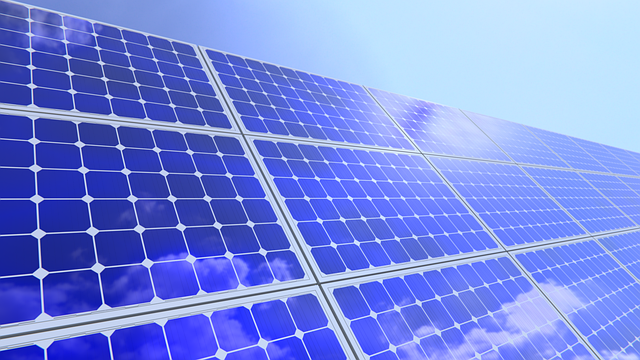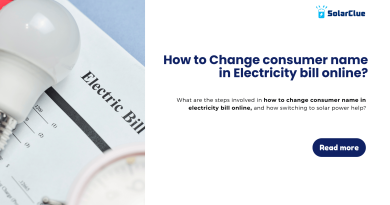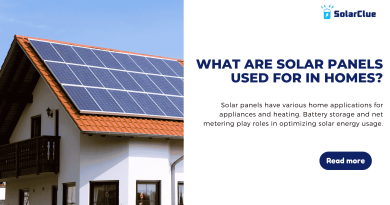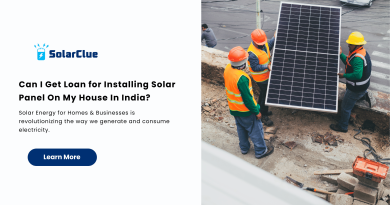Demystifying How Off-Grid Solar Plants Work
Off-grid solar plants have gained significant popularity in recent years as a sustainable and environmentally friendly solution for meeting energy needs in remote areas. These solar plants operate independently of the traditional power grid, making them an ideal choice for regions with limited access to electricity. In this blog, we will explore how off-grid solar plants work and delve into the various components that make up these systems.
Table of Contents
Understanding Off-Grid Solar Plants
Off-grid solar plants, also referred to as standalone or autonomous solar systems, are designed to generate and store electricity without reliance on utility companies. These systems are predominantly installed in areas where the cost of connecting to the grid is high or locations that are geographically isolated.
The key components of an off-grid solar plant include solar panels, a battery bank, a charge controller, an inverter, and a backup generator (optional). Let’s dive deeper into how these components work together to create a self-sustaining power system.
Solar Panels: Harnessing Sunlight
The heart of any solar plant is its solar panels, which contain photovoltaic (PV) cells. These cells are responsible for converting sunlight into direct current (DC) electricity. When sunlight hits the PV cells, it excites the electrons within, creating an electric current. The number and configuration of solar panels depend on the required load and the amount of sunlight available in the location.
Battery Bank: Storing Energy
As solar panels generate electricity, the excess power is transferred to the battery bank. This bank consists of multiple deep-cycle batteries that store and supply electrical energy as needed. Deep-cycle batteries are specifically designed to release their stored energy over a long period of time, making them ideal for off-grid systems. The battery bank ensures a continuous power supply during non-sunny periods or during high-demand situations.
Charge Controller: Regulating the Flow
To protect the batteries from overcharging and ensure their longevity, a charge controller is used. The charge controller regulates the flow of electricity between the battery bank and solar panels. It prevents overcharging by limiting the current and voltage when the battery bank is fully charged. This ensures efficient energy management and extends the battery lifespan.
Inverter: Converting DC to AC
Most appliances and devices in our homes and workplaces require alternating current (AC) electricity to function. In off-grid solar plants, an inverter is used to convert the DC electricity stored in the battery bank into AC electricity. This makes it compatible with regular household appliances and allows for seamless integration into the existing electrical system. Inverters come in various sizes and can handle different loads depending on the requirements of the system.
Backup Generator: Ensuring Reliability
While off-grid solar plants are designed to operate independently of the grid, including a backup generator can provide an extra layer of reliability. This generator can be configured to turn on automatically when the battery bank reaches a certain threshold, ensuring uninterrupted power supply even during extended periods of low sunlight or high demand. It acts as a safety net, ensuring that the system can provide power consistently regardless of the circumstances.
Conclusion
Off-grid solar plants offer a sustainable and economically viable solution for areas lacking access to traditional power grids. By harnessing the abundant energy of the sun, these systems can generate electricity that is clean, renewable, and reliable. Understanding the components of off-grid solar plants, such as solar panels, battery banks, charge controllers, inverters, and backup generators, is crucial to creating a self-sustaining power system. As the demand for renewable energy continues to rise, off-grid solar plants are poised to play a significant role in meeting the world’s energy needs while minimizing environmental impact.
Ready to unlock the secrets of off-grid solar plants? Dive into sustainable energy with SolarClue®. Explore the future of off-grid power.
Frequently Asked Questions
Off-grid solar plants operate independently, without reliance on the utility grid, providing energy autonomy.
Solar panels convert sunlight into electricity through photovoltaic cells, which generate direct current (DC) power.
Key components include solar panels, a charge controller, batteries for energy storage, an inverter, and necessary wiring.
Battery storage systems enable off-grid plants to store excess energy, providing power during periods without sunlight.
Installation times vary but can typically range from a few days to a couple of weeks, depending on system complexity.
Yes, it’s possible to expand the capacity of an off-grid plant by adding more solar panels or increasing battery storage.
Regular maintenance includes cleaning solar panels, checking battery health, and ensuring all components are in working order.
The capacity of the plant can be customized to meet specific energy demands, making it suitable for residential applications.
In some regions, incentives and rebates may be available to encourage the adoption of off-grid solar systems, promoting sustainability.
Off-grid solar plants reduce reliance on fossil fuels, decrease carbon emissions, and contribute to a cleaner, greener environment.




